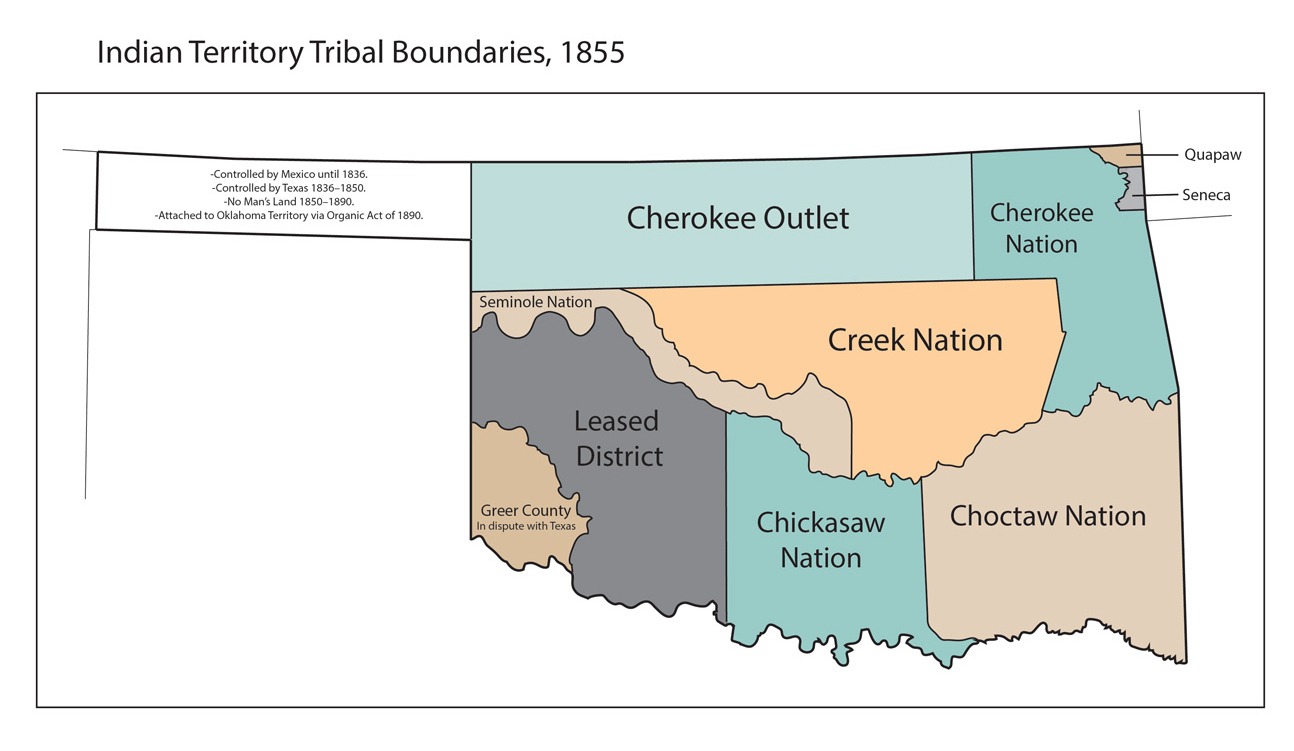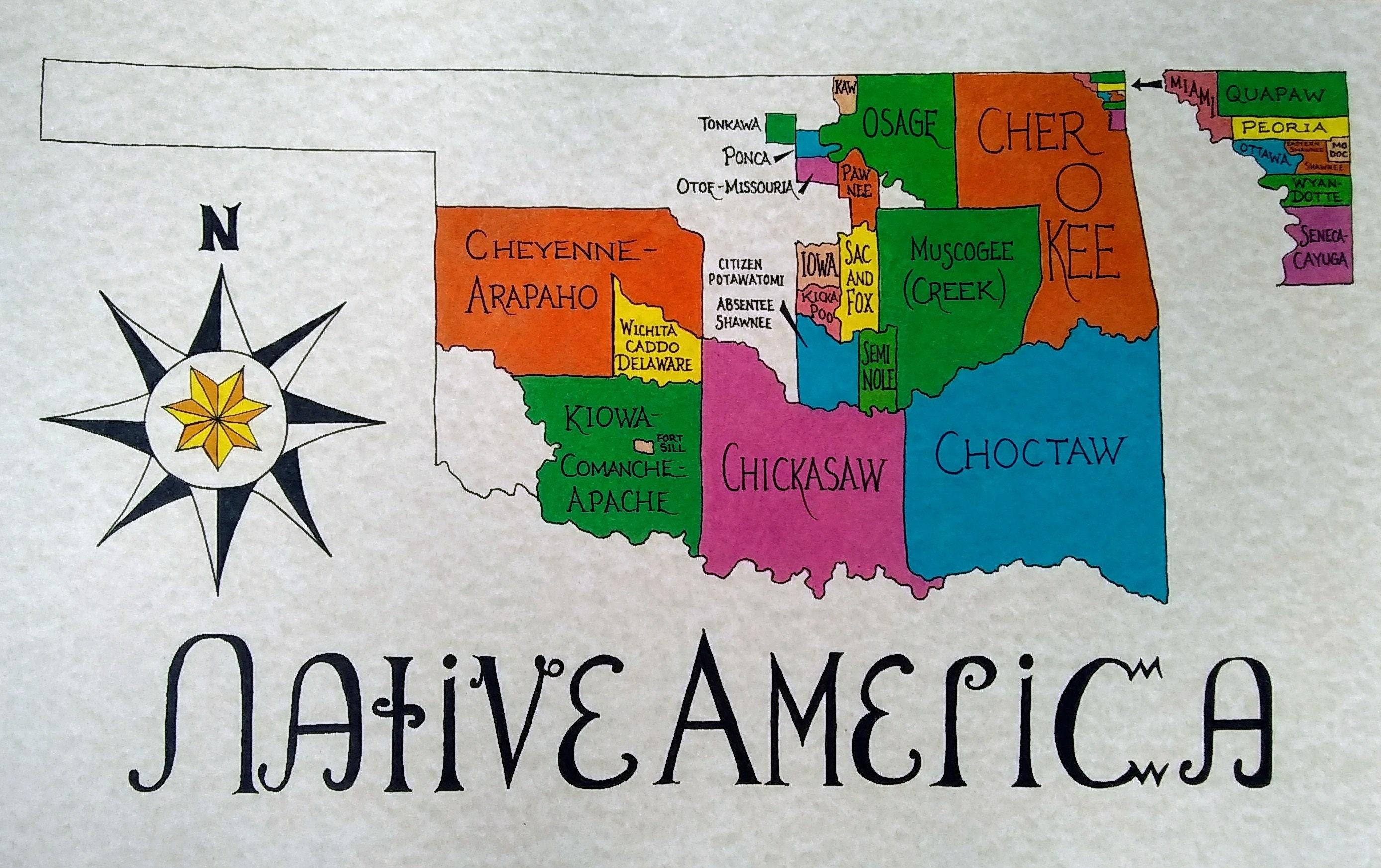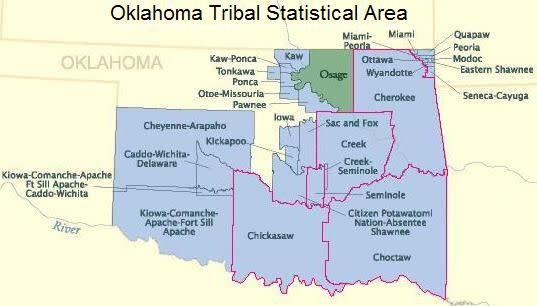Land of the Five Civilized Tribes: Exploring Oklahoma’s Indian Reservations
Land of the Five Civilized Tribes: Exploring Oklahoma’s Indian Reservations

Oklahoma, known as the "Sooner State," holds a rich and complex history intertwined with the story of its Native American communities. From the forced relocation of the Five Civilized Tribes in the 19th century to the vibrant cultural resurgence happening today, Oklahoma’s Indian reservations are a testament to resilience, tradition, and a deep connection to the land.
A Legacy of Forced Removal
Related Articles: Land of the Five Civilized Tribes: Exploring Oklahoma’s Indian Reservations
- Oklahoma’s Native American Tapestry: A Vibrant Legacy Woven Through Time
- Unveiling the Enigma: Discover the World of Federal Indian Reservations
- California’s Native Tapestry: Unveiling The Rich Diversity Of Tribes
- Unveiling the Native American Heritage: Discover the Enduring Spirit of Indian Reservations
- Unlock the Secrets: Discover the Number of Native Tribes in Oklahoma
Before the Trail of Tears, the Five Civilized Tribes – the Cherokee, Chickasaw, Choctaw, Creek, and Seminole – flourished in the Southeastern United States. They had established thriving societies, developed their own governments, and even owned slaves. However, the westward expansion of the United States brought about a devastating chapter in their history.
In the 1830s, under the Indian Removal Act, these tribes were forcibly relocated to what was then known as Indian Territory, a vast expanse of land that would eventually become the state of Oklahoma. The journey was brutal, with thousands dying from disease, starvation, and exposure.
Rebuilding in Indian Territory
Despite the trauma of the Trail of Tears, the Five Civilized Tribes rebuilt their lives in Indian Territory. They established new governments, schools, and businesses, and worked to preserve their traditions and languages.
However, the promise of self-governance was short-lived. The U.S. government continued to encroach on their land, and by the early 20th century, Oklahoma was admitted to the Union, effectively ending tribal sovereignty.
The Modern Era: Resilience and Growth
Despite the challenges of the past, Oklahoma’s Indian reservations are now experiencing a resurgence. The tribes have regained some of their sovereignty, and are actively working to preserve their cultures, languages, and traditions.
A Glimpse into the Culture and History

Today, Oklahoma’s Indian reservations are home to a diverse array of cultures and traditions. From the traditional dances and songs of the Cherokee to the intricate beadwork of the Chickasaw, each tribe has its own unique heritage.
The Cherokee Nation
The largest of the Five Civilized Tribes, the Cherokee Nation has a rich history and culture. Their language, Cherokee, is a syllabary, meaning it uses a unique set of symbols to represent sounds. The Cherokee Nation is known for its beautiful art, including pottery, basket weaving, and beadwork.
The Chickasaw Nation
The Chickasaw Nation has a long tradition of storytelling and music. They are known for their intricate beadwork, which is often used to create beautiful jewelry and clothing. The Chickasaw Nation also has a strong commitment to education and economic development.

The Choctaw Nation
The Choctaw Nation is known for its beautiful language, which is still spoken by many members of the tribe. They also have a rich tradition of storytelling, dance, and music. The Choctaw Nation is actively working to preserve its culture and language for future generations.
The Creek Nation
The Creek Nation has a long history of art and craftsmanship. They are known for their beautiful pottery, basket weaving, and beadwork. The Creek Nation also has a strong tradition of storytelling and music.
The Seminole Nation

The Seminole Nation is known for its resilience and independence. They were the only tribe that was never forcibly removed from their ancestral lands in Florida. The Seminole Nation has a rich history of fighting for their rights, and they continue to advocate for self-determination and cultural preservation.
Economic Development and Self-Governance
Oklahoma’s Indian reservations are also experiencing economic growth. The tribes have established casinos, businesses, and other enterprises that provide jobs and revenue for their communities.
The tribes are also working to regain their self-governance. They are developing their own laws and regulations, and they are working to ensure that their voices are heard in state and federal government.
A Visit to Oklahoma’s Indian Reservations
Visiting Oklahoma’s Indian reservations is a unique and rewarding experience. You can learn about the history and culture of the tribes, experience their traditions firsthand, and see the beauty of the land that they call home.
Here are some things you can do on your visit:
- Visit the museums and cultural centers: Each tribe has its own museum or cultural center where you can learn about their history, art, and traditions.
- Attend a powwow: Powwows are traditional gatherings where Native Americans come together to dance, sing, and celebrate their culture.
- Go hiking or camping: Many of the reservations have beautiful parks and hiking trails where you can enjoy the outdoors.
- Shop for Native American art and crafts: You can find beautiful jewelry, pottery, basket weaving, and other crafts made by Native American artists.
- Learn about the tribes’ history: There are many historical sites and landmarks on the reservations that tell the story of the tribes’ journey.
A Journey of Understanding
Visiting Oklahoma’s Indian reservations is not just about sightseeing; it’s about understanding the complex history and resilience of Native American communities. It’s about appreciating their rich cultures and traditions, and recognizing the importance of their ongoing fight for self-determination.
FAQ: Indian Reservations in Oklahoma
Q: How many Indian reservations are there in Oklahoma?
A: There are 39 federally recognized tribes in Oklahoma, each with its own unique history, culture, and land base.
Q: What is the largest Indian reservation in Oklahoma?
A: The Cherokee Nation has the largest land base in Oklahoma, covering over 7,000 square miles.
Q: What are the benefits of being a member of an Indian tribe in Oklahoma?
A: Tribal membership can offer various benefits, including access to healthcare, education, housing, and economic opportunities.
Q: Can anyone visit Oklahoma’s Indian reservations?
A: Yes, visitors are welcome on most reservations. However, it’s always a good idea to check with the tribe’s website or visitor center for any specific regulations or guidelines.
Q: What is the best time to visit Oklahoma’s Indian reservations?
A: The best time to visit is during the spring and fall, when the weather is pleasant and the foliage is beautiful.
Q: Are there any special events or festivals on the reservations?
A: Many tribes host special events and festivals throughout the year, including powwows, art shows, and cultural celebrations.
Q: How can I learn more about Oklahoma’s Indian reservations?
A: There are many resources available to learn more about Oklahoma’s Indian reservations, including:
- The Oklahoma Indian Affairs Commission: https://www.oiac.ok.gov/
- The Five Civilized Tribes:
- Cherokee Nation: https://www.cherokee.org/
- Chickasaw Nation: https://www.chickasaw.net/
- Choctaw Nation: https://www.choctawnation.com/
- Creek Nation: https://www.muscogeenation.com/
- Seminole Nation: https://www.seminolenation.com/
- The National Museum of the American Indian: https://americanindian.si.edu/
Oklahoma’s Indian reservations are a testament to the resilience and cultural richness of Native American communities. By visiting and learning about their history, traditions, and ongoing struggles, we can gain a deeper understanding of the diverse tapestry that makes up the American story.
Closure
Thus, we hope this article has provided valuable insights into Land of the Five Civilized Tribes: Exploring Oklahoma’s Indian Reservations. We thank you for taking the time to read this article. See you in our next article!